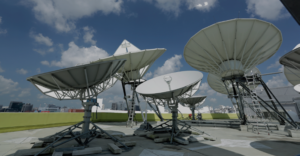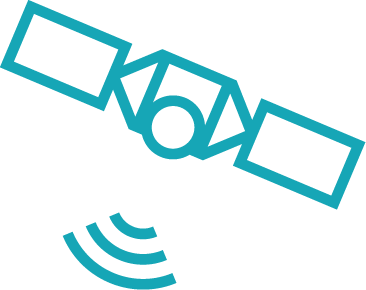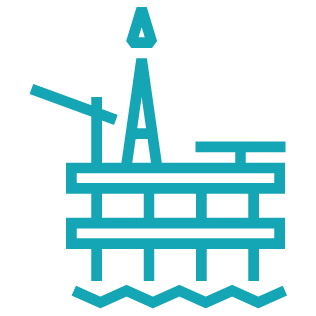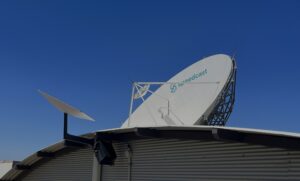IoT in mining is emerging as an effective way for companies to differentiate and gain a competitive advantage.
Today, mining companies are being forced to go further to stay competitive geographically and operationally. Companies must venture further afield to find and extract dwindling raw materials. As operation sites become more remote, mining companies must further monitor crew safety to keep employees happy and healthy. Companies also need to consider more than their mine site; they must integrate environmental sustainability initiatives in all operations. Simultaneously, companies must do all this while operating faster and at lower costs than competitors. In other words, retaining market share in the competitive mining industry requires leveraging any, and all, advantages. If companies want to maintain their place in the industry, they need to explore and implement strategies that keep them ahead of the curve. While there is no magic solution to solve all the obstacles the industry faces, the Internet of Things (IoT) is emerging as an effective way for companies to differentiate and gain a competitive advantageespecially as digitization continues to spread from big players in the industry to smaller operations. IoT devices connecting sites, people, and equipment from across the globe provide data that allows for high-quality decision making across all organizational levels, from highly strategic location choices to operational and maintenance schedules, to on-site, real-time evaluations. The more data available, the better and faster a company can confidently make decisions that lead to increased margins and improved work conditions. Today, Industrial IoT (IIoT) is already having an impact on operations in mining, agriculture, energy, transport, and maritime. Interviews with more than 750 professionals across these industries by Inmarsat found that 27 percent of companies surveyed were already experiencing improved decision making thanks to deployed IoT devices, with an additional 49 percent expecting to see similar results in the future. Gartner also estimates that more than 20 billion IoT devices will be in use by 2020, with manufacturing and utilities expected to have the largest installed base of devices.
Despite the myriad benefits that IoT can bring to mining, the industry is lagging in adoption. The 2017 NSR report found mining end-users technology agnostic, and the same Inmarsat survey found only 2 percent of respondents in the mining sector had fully deployed IoT solutions. In contrast, the survey found that 40 percent of transportation industry respondents had fully deployed IIoT solutions. Geographically, North American mining companies and those with large turnover are leading the way in IoT adoption, with various challenges holding back Australian, South African, and Russian mining companies. While it may be tempting to view this slow start as an opportunity to ease into IoT, mining companies would be advised not to take their time. The mining industry is ready to dive into the future of IoT, with 84 percent of mining industry respondents saying they believe that IoT will revolutionize their organization, and 79 percent acknowledging that the technology will be essential for their organization to gain a competitive advantage. The most pressing statistic? Sixty-nine percent of those surveyed said their organization would be trialling IoT solutions in the next two years. For mining companies to stay ahead of the curve and maintain market share in the industry, they must begin implementing IoT today. We have compiled five recommendations to give mining companies a head start on implementing IoT.
Five Strategies to Implement IoT for Mining Right Now
While the greatest gains to be realized for mining are likely in operational and extraction efficiency, those mining companies that have begun to install IoT components have been primarily focused on using the technology to improve health and safety. This strategy makes sense: Crew health and safety is paramount, especially as mining sites become more remote and more hazardous. For companies just beginning their journey with IoT, implementing health and safety solutions, such as lone worker tracking, would be a good place to start. With IoT devices, companies can better track both crew and assets to ensure zero harm. IoT devices can warn crew when they are involuntarily wandering into a dangerous area, or if there’s a dangerous gas leak. In general, IoT devices make remote worksites easier to monitor and safer for workers. In general, mining operations would be advised to form a digitization strategy around a hierarchy of communication technologies. By meeting the greatest needs first, the mining industry can create room to grow. Companies can meet the industry baseline and build a solid foundation on which to further expand their IoT solutions by placing health and safety IoT solutions as the first step in their strategy.
1. Adopt the IoT Industry Baseline
While the greatest gains to be realized for mining are likely in operational and extraction efficiency, those mining companies that have begun to install IoT components have been primarily focused on using the technology to improve health and safety. This strategy makes sense: Crew health and safety is paramount, especially as mining sites become more remote and more hazardous. For companies just beginning their journey with IoT, implementing health and safety solutions, such as lone worker tracking, would be a good place to start. With IoT devices, companies can better track both crew and assets to ensure zero harm. IoT devices can warn crew when they are involuntarily wandering into a dangerous area, or if there’s a dangerous gas leak. In general, IoT devices make remote worksites easier to monitor and safer for workers. In general, mining operations would be advised to form a digitization strategy around a hierarchy of communication technologies. By meeting the greatest needs first, the mining industry can create room to grow. Companies can meet the industry baseline and build a solid foundation on which to further expand their IoT solutions by placing health and safety IoT solutions as the first step in their strategy.
2. Implement IoT Technology For Greater Efficiencies
Success in mining comes from the ability to efficiently extract raw materials while keeping costs lowall while increasing the pace of operations. To find ways to safely and efficiently do this, companies need datadata that IoT devices deployed across mining operations can provide. That’s why the ultimate goal of the future digital mine is the monitoring of everythingtransport, people, zones, production and securityto optimize processes. When analyzed properly, this data allows miners to find efficiencies and cut costs in a variety of ways. For example, data transmitted to a base of operations allows companies to assess needs quickly at a site, minimizing downtime. Historical information combined with current mine conditions can provide guidance in providing the appropriate resources and team to manage site operations and material extraction. IoT devices also create opportunities for automation and predictive maintenance of equipment. Organizations can fix equipment before it breaks, preventing the breakage of critical components and resulting shutdown of operations, with equipment data shared across the organization and processed with machine learning. Keeping a close eye on equipment through IoT devices also ensures that the proper parts and components are always in place for repairs when they are needed – an especially critical consideration as mining sites continue to become more remote. Mining companies need to go beyond the implementation of IoT devices for only health and safety purposes and cast a greater focus on the ways IoT can cut operational costs in innovative ways. The 2017 NSR report found the greatest market revenue opportunity in the production phaseperhaps a good place to focus IoT technologies after health and safety.
3. Explore More Robust Cybersecurity Solutions
As more devices become connected, inevitably there’s more opportunity for cybersecurity breaches and attacks. Without adequately addressing security for internet-enabled devices, mining companies could leave their operations and sensitive company information vulnerable. It’s important that mining companies invest in updated security technologies in tandem with IoT technologies. A robust cybersecurity system will ensure that mining companies address potential cyber-risks that could otherwise leave them open to attacks and the loss of strategically important data that could compromise workers, sites and operations. Beyond the software, companies need to ensure cybersecurity is a strategic topic throughout the company. Crew members need to have the skills to practice safe online behavior, and Chief Information Security Officers should be involved in IoT implementation and safety.
4. Invest in Employee IoT Skills and Knowledge
Collecting data from IoT devices is only half of the solution; companies must have the skillset to analyse collected data and apply it to operations in new ways. IoT technology is useless without employees who can successfully utilize it. Despite this, critical skills needed for the successful deployment of IoT and data management don’t exist or are in short supply in many mining organizations across the industry. To take advantage of the safety and operational benefits of IoT, companies need to invest in increasing IoT-related skills and knowledge across all levels of their organization. Workers on the front lines need to know how IoT technology works; they also have the best perspective on how technology could improve their day-to-day lives. Companies also should invest in employees with strong analytics and data science skills so they can create strategies that suit their specific company. By investing in IoT skillsets and hiring workers with relevant experience now, mining companies will benefit both now and in the future.
5. Consolidate Service Providers
For many remote mining sites, satellite network communications are a vital element to the overall IoT solutionespecially for IoT applications that rely on real-time data transfer and communication. Although comprehensive connectivity is important, mining companies need to start thinking one step ahead. As more IoT devices come online, mining companies will be faced with a greater number of platforms, services, and service providers. Mining companies should start thinking about not simply having connectivity, but how they’re connecting. Adding new service providers with each discrete service is sure to become a logistical nightmare in the future. Instead, companies should begin considering ways they can consolidate service providers as much as possible. Although service providers are likely to offer more customizable, comprehensive solutions in the next few years, any legwork now will ease costs and future confusion.
The Speedcast Solution
The use of IoT technologies is a critical component to overcoming some of the largest challenges in the mining industry. Individual organizations will need to leverage these technologies to remain competitive as the industry as a whole catches up to supply chain IIoT adoption. No two mine sites are the same, and neither should connectivity solutions be. Speedcast provides a suite of connectivity and technology solutions that companies can leverage now for a complete, end-to-end IoT solution that will help cut costs, increase production, and improve health and safety. In addition to basic capabilities, such as CCTV and big data management, a few of Speedcast’s IoT solutions include: Speedcast FieldVision: Designed for customers to connect, protect and monitor both people and assets through a single, cloud-based platform, from anywhere in the world. With FieldVision, companies can use real-time data to quickly make smart operational decisions to keep crews safe and business running efficiently.
Cybersecurity solutions: Speedcast offers collaborative cybersecurity, with multiple technologies working together for the detection of advanced threats. The integration of devices using open standards, common operating systems, and unified management platforms enables the sharing and correlation of real-time threat intelligence. Network of networks: At the core of all good IoT systems is reliable connectivity. Speedcast utilizes a network of more than 70 satellites and more than 40 teleports on multiple bands and orbits. This means high-bandwidth communication anywhere, anytime, so that teams stay in contact while in even the most remote corners of the planet. Speedcast’s transportable, powerful VSAT terminals are also perfect for the exploration phase and beyond. Speedcast’s team of more than 250 field engineers understand mining operations and their communications needs. This allows them to design exactly the right system to meet unique site requirements. With Speedcast, mining companies gain a connectivity partner to develop smart IoT solutions now and into the future.



























